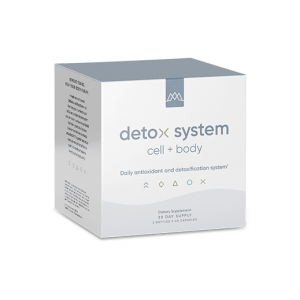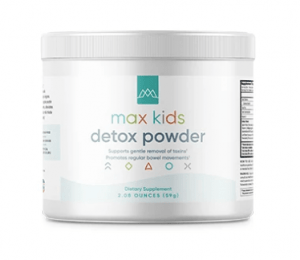Clutter, Dust, and Dirt Can Lead to Health Problems
- Spring Cleaning Can Occur Any Time
- Chemical Cleaning Products Can Be Dangerous to Your Health
- Natural Cleaning Solutions: The Safe Way to Clean and Detox Your Home
- Minimize Your Exposure to Toxins
Over time, we accumulate things that can create clutter. Too many clothes jammed in the closet, frozen food shoved into the freezer, and stacks of magazines piled in the garage can create a feeling of being weighed down.
Discarded and unused possessions also attract dust, or the accumulation of small particles — bits of cloth fibers, paper, hair, pet dander, skin cells, and dirt — that can lead to allergies and other health problems.
Spring and fall provide excellent times to de-clutter, but you can do this any time. Have a yard sale, give old clothes and books to your local charity, and determine what you’re spending money on that you really don’t need.
Spring Cleaning Can Occur Any Time
While you’re getting rid of things that no longer bring you joy or serve you, give your home a good cleaning. A spring cleaning can happen during spring or really, any time. The mindset is what matters.
To do that, you might buy bleach, ammonia, disinfectants, and other cleaning products for your bathroom, kitchen, countertops, and other surfaces.
Many of us use these cleaning products daily in our workplaces, homes, and anywhere that needs regular cleaning. But they might be sabotaging your health in ways you’re not aware. [1]
Chemical Cleaning Products Can Be Dangerous to Your Health
Many household products contain problematic ingredients that can create widespread health risks. [2]

A growing number of studies show these hazardous chemicals can create an adverse impact on your skin and the respiratory tract, creating or amplifying problems, including dermatitis and asthma. Researchers also find an increased risk of musculoskeletal and other problems being exposed to commercial cleaning products. [3]
Chemicals in these products also end up in the indoor air and settled dust. As a result, many Americans carry traces of phthalates, phenols, flame retardants, and other chemicals in their bodies.
Chemicals like these can lead to reproductive problems and hormonal imbalances. [4] Adding fragrances and preservatives in this chemical solution creates more problems. [5]
Most of us – more than 90%, in fact – spend most of our time indoors. [6] The many chemicals we breathe — in furniture, electronics, personal care, and other cleaning products — can release byproducts that end up in indoor air and settled dust.
Many products lack complete transparency, providing missing or incomplete information on the ingredients and labels. Along with clever and expensive marketing, choosing healthier cleaning products can be difficult. [7]
Health Risks Are Exposed by Manufacturers
Manufacturers might claim ingredients in their products have been tested. That’s not always the case, and for many of these ingredients, we don’t know their long-term impact. Despite evidence of potential health risks, they continue to use these ingredients in common household cleaners. [8]
While everyone exposed becomes at risk to breathe in and ingest these small particles of chemical-containing dust, infants and young children are especially at risk. [9]
Consider phthalates, one of the many ingredients used in cleaning products, cosmetics, and more. Manufacturers often use this group of chemicals for various reasons: To make scents last longer, for instance, and to help lotions and cosmetics stick penetrate your skin. [10] You can ingest, breathe in, or absorb phthalates through your skin. [11]
Among their damage, phthalates can disrupt your hormones – a termed called endocrine disruptors – and contribute to cancer.
While Congress outlawed three types of phthalates in toys and childcare products, dozens of types still exist in many everyday products. Even more troubling, manufacturers don’t have to tell you which ones they use in products. [12]
The repercussions of phthalates and many other potentially hazardous chemicals impact everyone. The Environmental Working Group (EWG) evaluated 21 common school cleaners and found that six of them emitted at least one of three common allergy-triggering ingredients into the air, even when people used them as directed.
Some of these ingredients can also contribute to birth defects, chemical burns, poisonings, and less severe irritations and allergies. [13]
Natural Cleaning Solutions: The Safe Way to Clean and Detox Your Home
Despite these and other potential health challenges in conventional cleaning products, you’ve got plenty of options to clean your home while minimizing exposure to phthalates and other chemicals.
The EWG provides an excellent Guide to Healthy Cleaning that covers the gamut from bathroom and kitchen cleaners to laundry and dishwashing products and even air fresheners.
You can evaluate over 25,000 products, all graded from A to F based on their ingredients and their impact on your health and the environment. Studies show that exposure to environmentally friendly products created fewer reactions, creating a safer alternative to traditional cleaning products. [14]
Better yet, learn to make your own cleaning products and disinfectants for cleaning the kitchen, bathroom, sink, countertops, and other surfaces.

Basic ingredients like baking soda, hydrogen peroxide, and white vinegar can clean just about anything. [15] If you need a pleasant scent you can add lavender or other essential oils.
These ingredients are often simple to mix and lack the potential problems that commercial cleaners present.
Natural cleaning products can give your home that sparkles without the harsh chemicals in commercial cleaning products. Baking soda and vinegar can help freshen drains. Certain plants, such as English ivy and the spider plant, keep your air clean. [16]
These solutions often work just as well or even better than conventional cleaners. One study looked at three products for cleaning common household surfaces and disinfecting against two common bacteria. [17]
Researchers evaluated conventional bleach, an environmentally preferable (EP) product, or a do-it-yourself (DIY) mix of distilled white vinegar, club soda, and tea tree oil. [18]
- For cleaning ceramic, the DIY product performed better than the EP product and bleach.
- On stainless, only DIY failed to meet the standard.
- For disinfecting, bleach and EP work well, but the DIY product was more active against one bacteria.
Researchers concluded that a DIY product freshly prepared each day could make an alternative to commercial cleaning products for many surfaces. [19]
You’ll save time, money, and — more importantly — your health and the environment when you use these DIY products.
You can find plenty of recipes for your bathroom, kitchen, stain removal, and general cleaning in this article.
Minimize Your Exposure to Toxins
Researchers estimate the average person becomes exposed to anywhere between 25,000 and 84,000 chemicals. [20] These environmental toxins lurk in cleaning products but also in cosmetics, the food we breathe, the water we drink, and the air we breathe.
We are all toxic, but some of us carry a high burden. Excess amounts of these toxins contribute to numerous chronic diseases including obesity. [21] You can’t eliminate these toxins — they’re everywhere — but you can reduce their impact. An ideal way to start is with natural cleaning solutions for your home.

What you eat matters too. Our Core and Advanced Plans also contain plenty of foods that can help your body detoxify, including garlic, cruciferous vegetables, and leafy greens.
Choose organic foods whenever you can, which are lower in pesticides and other toxins. The EWG’s Shopper’s Guide to Pesticides in Produce™ can help you become a more informed consumer by determining the fruits and vegetables you should buy organic and which ones to skip.
Drinking filtered water can also help minimize toxins. Researchers recently found that in 43 states, drinking water contains chemicals linked to health issues that include birth defects, cancers, and infertility. [22]
If you suspect a high toxin burden, consider our Detox System, which provides your body the nutrients it requires to optimally detoxify.
References
- https://www.ncbi.nlm.nih.gov/pmc/articles/PMC2678109/
- https://www.ncbi.nlm.nih.gov/pmc/articles/PMC2678109/
- https://www.ncbi.nlm.nih.gov/pmc/articles/PMC4976595/
- https://www.ncbi.nlm.nih.gov/pmc/articles/PMC5561392/
- https://www.ncbi.nlm.nih.gov/pmc/articles/PMC4096065/
- https://www.ncbi.nlm.nih.gov/pmc/articles/PMC5561392/
- https://www.ewg.org/guides/cleaners/content/decoding_labels/
- https://www.ncbi.nlm.nih.gov/pmc/articles/PMC5561392/
- https://www.ncbi.nlm.nih.gov/pmc/articles/PMC5561392/
- https://www.nrdc.org/stories/fighting-phthalates
- https://toxtown.nlm.nih.gov/chemicals-and-contaminants/phthalates
- https://www.nrdc.org/stories/fighting-phthalates
- https://www.ewg.org/guides/cleaners/content/cleaners_and_health
- https://www.ncbi.nlm.nih.gov/pmc/articles/PMC4976595/
- https://keeperofthehome.org/homemade-all-natural-cleaning-recipes/
- https://www.ncbi.nlm.nih.gov/pubmed/11366863
- https://www.ncbi.nlm.nih.gov/pubmed/26274937
- https://www.ncbi.nlm.nih.gov/pubmed/26274937
- https://www.ncbi.nlm.nih.gov/pubmed/26274937
- https://www.ncbi.nlm.nih.gov/books/NBK268889/
- https://www.ncbi.nlm.nih.gov/books/NBK268889/
- https://www.cbsnews.com/news/drinking-water-may-contain-pfas-chemicals-in-43-states-according-to-new-study-by-environmental-working-group/




